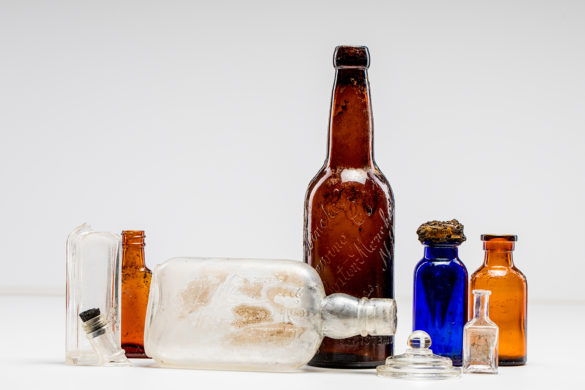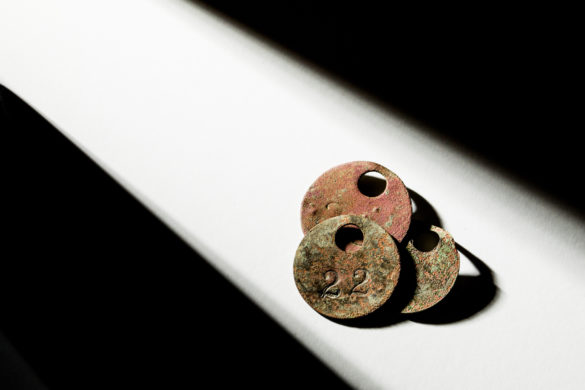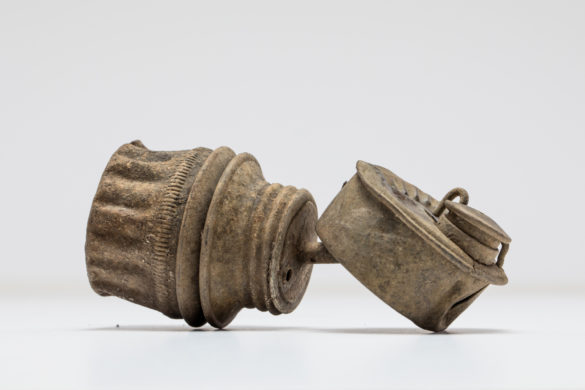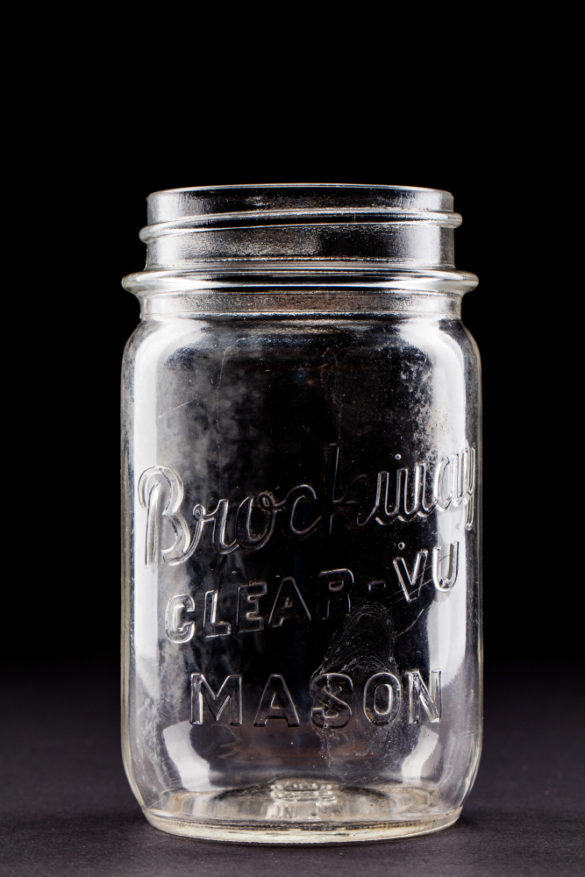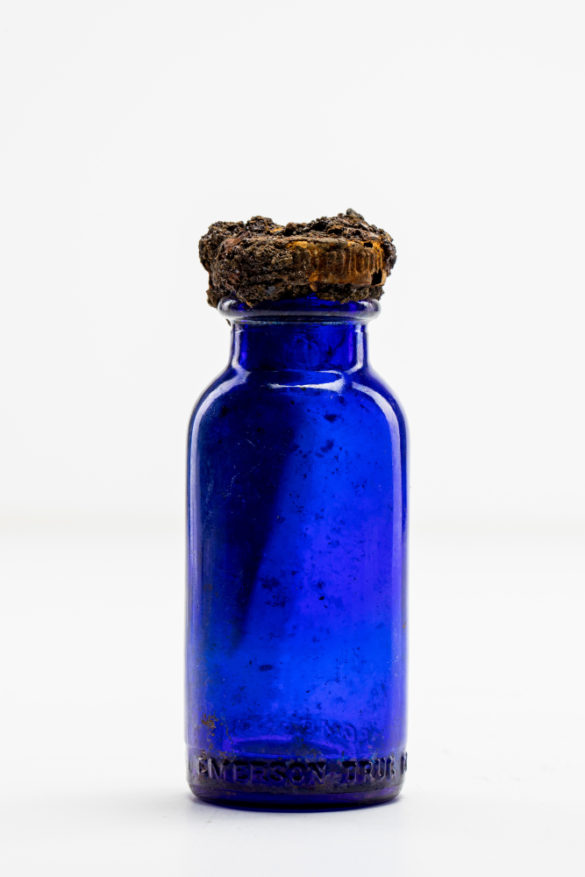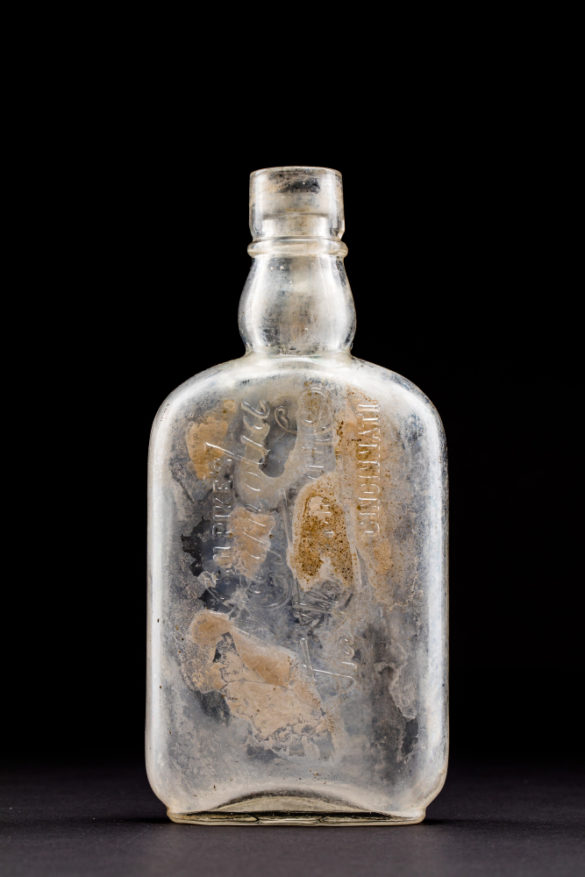Old medicine and whiskey bottles, miners’ equipment, and hundreds of other excavated artifacts from a coal-mining boomtown in West Virginia were recently brought to UT’s archaeology laboratories for preservation as part of a partnership with the National Park Service.
The century-old items had sat for more than 20 years inside deteriorating boxes in museum collections at the New River Gorge National River, a unit of the NPS. They had originally been excavated from sites around Thurmond, West Virginia, in the early 1990s as part of federal requirements to protect archaeological resources whenever tearing down or building new structures on public land.
“We were looking for a partner to help us raise the collection’s standards to those of the National Park Service,” said David Fuerst, cultural resource program manager for the New River Gorge. “We knew the University of Tennessee would go above and beyond our expectations.”
Thurmond, which lies inside the boundaries of the New River Gorge National River, had been among the wealthiest towns in West Virginia from the start of the 20th century until the Great Depression, when businesses reliant on coal production and the revenues of the Chesapeake and Ohio Railway shuttered.
Earlier this year, Ellen Lofaro, curator of archaeology in UT’s Department of Anthropology, packed 40 boxes of items from Thurmond into a van and drove them to the archaeology labs on Middlebrook Pike in Knoxville, where students have spent four months handling, cataloging, and reorganizing the artifacts in new boxes for the NPS.
“This was an opportunity for our students to not only provide a much better-preserved collection to the park,” Lofaro said, “but to receive hands-on training and education on their path to becoming future archaeologists and curators.”
“We’ve looked at any items that human beings living may have touched,” said Clare Remy, a third-year anthropology major from Tucson, Arizona, who typically works with human remains. “It is incredible to see the amount of material you could collect.”
In addition to storing the artifacts in new bags and boxes, Remy was one of 16 students who developed an improved system for locating and learning about the materials—a significant benefit for any future thesis, dissertation, or professional research done about the area.
“I basically went through and compared whatever I had in my hand with the catalog from the original excavation,” Remy said. “After labeling and storing the items, I’d create templates for how we’d enter the data so they could be found based on type and location on the original site.”
Because of her and other students’ efforts, a researcher curious about glass from the early 1900s can now easily search a digital database for glass, then narrow the results down by type—bottles, jars, marbles—to get more specific provenance information. Most of the artifacts Remy handled, which include a broad range of medicine and liquor bottles, jars, metal items, ceramics, and animal bones, date to the late 19th through early 20th centuries.
Each item carried with it a story of what life was like in coal mining towns of the past. Take a carbide miner’s lamp and brass miner tags as examples.
“The lamp came into use around 1900, but because of safety concerns about its open flame it was phased out in favor of electric battery lamps beginning in 1918,” said Valerie Altizer, a senior archaeologist who supervised the students. “The miner’s tags were used from the late 1800s and throughout much of the 20th century.”
The project hit close to home for Altizer. Her father’s family lived in McDowell County, near Thurmond, for six generations. Nearly all of them had worked as coal miners. When the family eventually left the county, her grandfather managed a coal company store within the New River Gorge, where her grandmother was a schoolteacher.
“When my dad showed me where it the store was decades later there was nothing left but a foundation,” Altizer said.
While federal laws protect archeological sites and collections on federal lands, that is not the case for privately owned lands, where archaeological sites are routinely destroyed by development or industry.
“Places like the New River Gorge Scenic River may be our best opportunity to learn about the historic inhabitants of the region,” Altizer said. “We can use archaeology to teach the once-booming industrial history of the area.”
Former boomtowns such as Thurmond can be brought back to life.
“This was an opportunity I wouldn’t have had anywhere else,” said Remy, who plans to pursue a PhD studying ancient skeletal remains and diseases at archaeological sites. “It’s helped me figure what I want to do after undergrad, and it’s made me a more well-rounded archaeologist.”
To learn more about archaeological projects happening at UT, visit the Archaeology program’s website.


